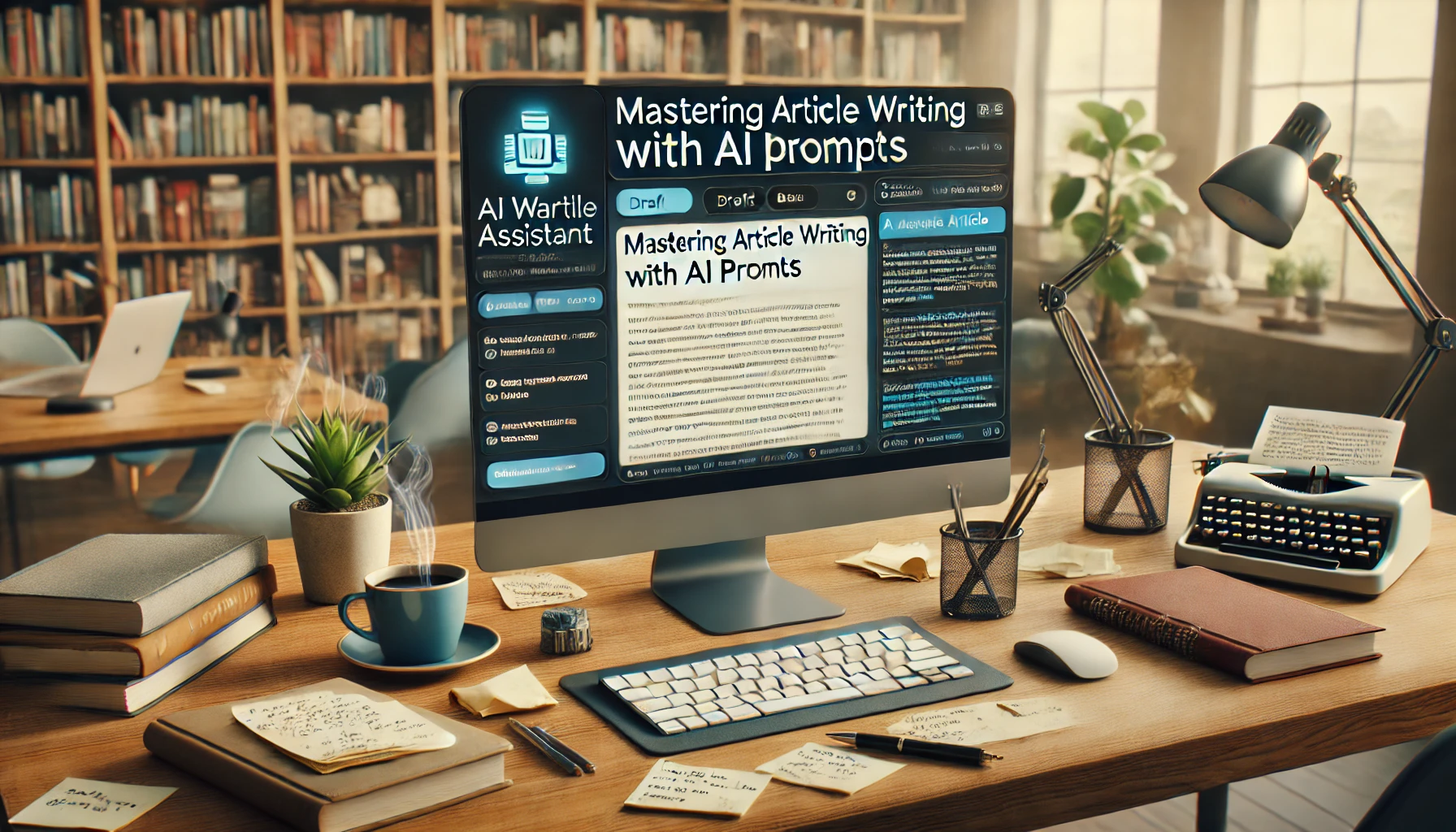Mastering Article Writing with AI Prompts: Tips, Tools, and Techniques

Table of Contents
ToggleMastering Article Writing with AI Prompts: A Complete Guide
Incorporating artificial intelligence (AI) into article writing can elevate your writing process, streamline workflows, and spark creativity. This guide will walk you through every step of using AI prompts effectively, from ideation to editing, and even introduce best practices for ethical and efficient AI-assisted writing.
1. Introduction to AI in Article Writing
AI tools like ChatGPT and Wordtune have transformed the writing landscape, offering writers at all levels the ability to streamline ideation, organization, drafting, and editing. While AI can’t replace a writer’s unique voice, it can enhance efficiency and serve as a powerful brainstorming partner. By understanding how to use AI prompts throughout the writing process, you can produce high-quality articles more easily and creatively.
2. Step 1: Generating Ideas with AI Prompts
Why AI for Idea Generation? AI can help by suggesting fresh topics, trending angles, or subtopics based on existing content or user-provided keywords. It’s especially useful for overcoming writer’s block or expanding on a general topic.
How to Use AI for Idea Generation:
- Keyword-Based Prompts: Use keywords related to your field or audience to prompt AI to generate topic ideas. For example:
- Prompt: “Generate article ideas about sustainable energy.”
- Trend Exploration: Prompt AI to explore current events or trends in your field.
- Prompt: “What are the latest trends in remote work for 2024?”
Example Outcome: You may receive ideas like “How Remote Work is Changing Urban Development” or “The Environmental Impact of Work-from-Home Policies.”
3. Step 2: Creating Effective Outlines
Why Outlines Matter: A clear outline helps structure thoughts and ensures your article flows logically from start to finish. AI can help generate a basic outline or suggest sections to include, saving time on structuring your content.
How to Prompt AI for Outlines:
- Topic-Based Outline Prompts: Ask for an outline on a specific topic.
- Prompt: “Outline an article on the benefits of remote work.”
- Section-Specific Prompts: If you need more detail in specific areas, you can ask the AI for sub-points or breakdowns.
- Prompt: “What points should I include in a section on productivity benefits of remote work?”
Example Outline:
- Introduction to Remote Work
- Productivity Benefits
- Environmental Impacts
- Challenges and Solutions
- Future Trends
4. Step 3: Drafting with AI Assistance
Using AI for Initial Drafting: AI can assist with the initial draft by generating paragraphs or even sections based on your outline. This can accelerate the writing process and provide alternative ways to articulate ideas.
How to Prompt AI for Drafting:
- Outline-Based Prompts: Use specific sections from your outline as prompts for AI to write a draft.
- Prompt: “Write an introductory paragraph for an article on the benefits of remote work.”
- Bullet Points to Paragraphs: If you have bullet points, AI can expand them into full paragraphs.
- Prompt: “Expand on this point: Remote work reduces commuting time and increases work-life balance.”
Example Output: For the prompt “Write an introductory paragraph on the benefits of remote work,” AI might generate: “Remote work has revolutionized the modern workplace by offering employees flexibility and businesses reduced operational costs. This shift has not only changed daily routines but has also contributed to a healthier work-life balance and reduced environmental impact. As remote work continues to evolve, understanding its benefits becomes essential for employers and employees alike.”
5. Step 4: Editing and Refining the Draft
AI as a Refinement Tool: AI-powered tools like Grammarly and Wordtune offer editing assistance by identifying grammatical errors, suggesting stylistic improvements, and enhancing readability.
Editing with AI Prompts:
- Grammar and Style Checks: Use tools to catch grammar mistakes and refine sentence structure.
- Alternative Wording: If you want a phrase reworded, ask AI for alternatives.
- Prompt: “Rewrite this sentence to make it more concise: Remote work has led to significant benefits for employees, including greater flexibility in their schedules.”
Example Refinement: Original: “Remote work has led to significant benefits for employees, including greater flexibility in their schedules.” AI-Refined: “Remote work offers employees greater schedule flexibility and other significant benefits.”
6. Step 5: Enhancing Creativity with AI Prompts
AI can help break creative blocks by suggesting fresh angles, unique examples, or alternative perspectives. Using prompts geared toward creativity can keep your writing engaging and original.
Prompts for Creativity:
- New Perspectives: Ask for alternative viewpoints or examples.
- Prompt: “Suggest some lesser-known benefits of remote work.”
- Story or Example Suggestions: Request examples that illustrate a point.
- Prompt: “Provide a story example that illustrates the productivity benefits of remote work.”
Example Output: For the prompt “Provide a story example that illustrates the productivity benefits of remote work,” AI might respond: “Imagine a working parent who spends two hours daily commuting. Remote work allows them to start work fresh, without the stress of traffic, and dedicate that extra time to their family, leading to better mental health and higher productivity during work hours.”
7. Best Practices for AI in Writing
To use AI effectively, it’s important to follow some best practices:
- Maintain Authorship: Use AI suggestions as a starting point, but make sure to infuse your voice and perspective.
- Verify Information: Always fact-check AI-generated content to ensure accuracy.
- Ethical Use: In academic or professional settings, it’s best to be transparent about using AI. This helps maintain trust and integrity in your work.
8. Conclusion
AI prompts are powerful tools in the article-writing process, from brainstorming to final edits. By integrating these tools thoughtfully, you can write faster, overcome creative blocks, and ensure a high-quality output. Remember, while AI can be a valuable assistant, the writer’s insights, voice, and expertise remain at the heart of engaging and impactful articles. Embrace AI as a collaborative partner in your writing journey!



